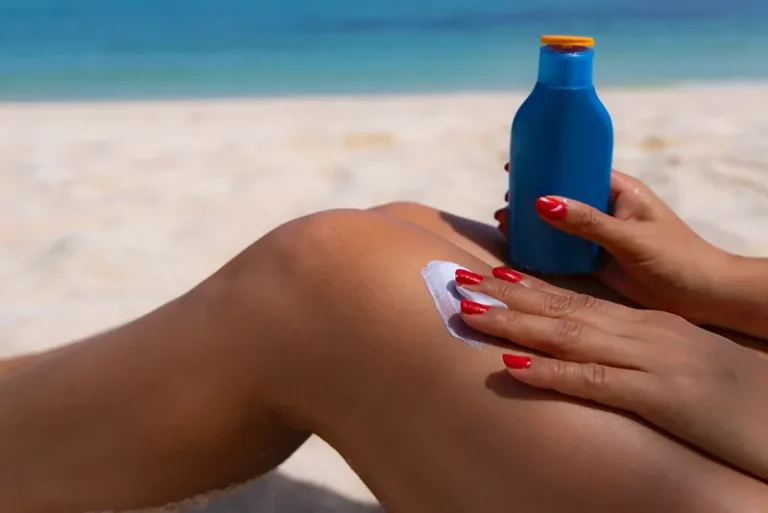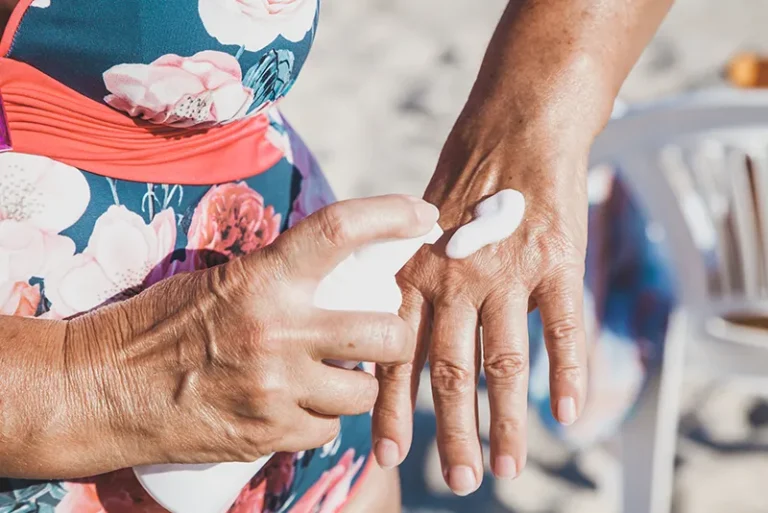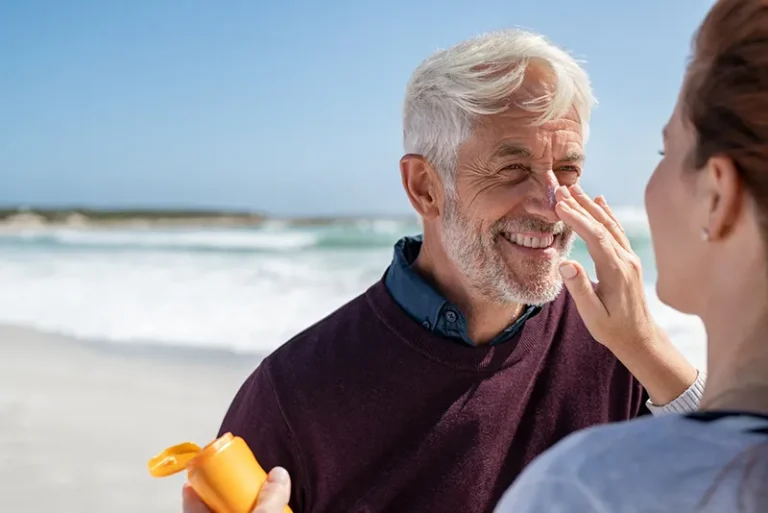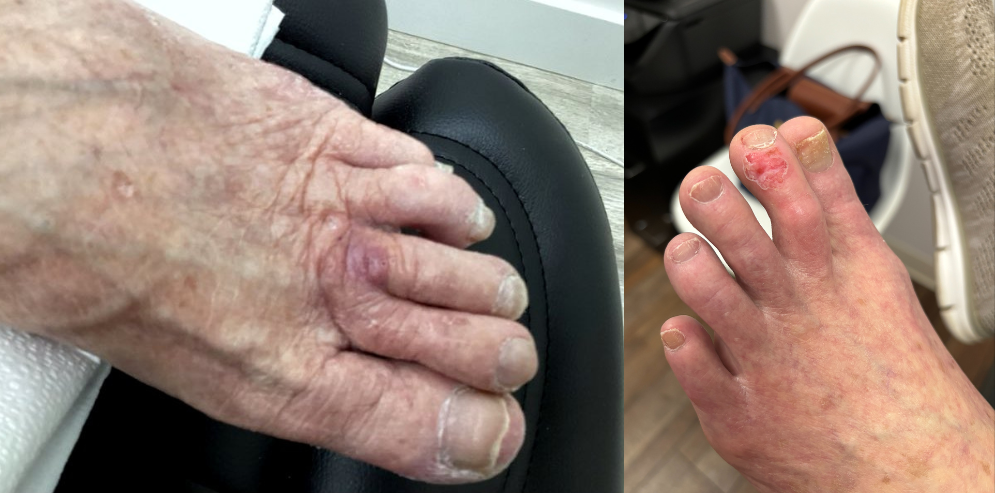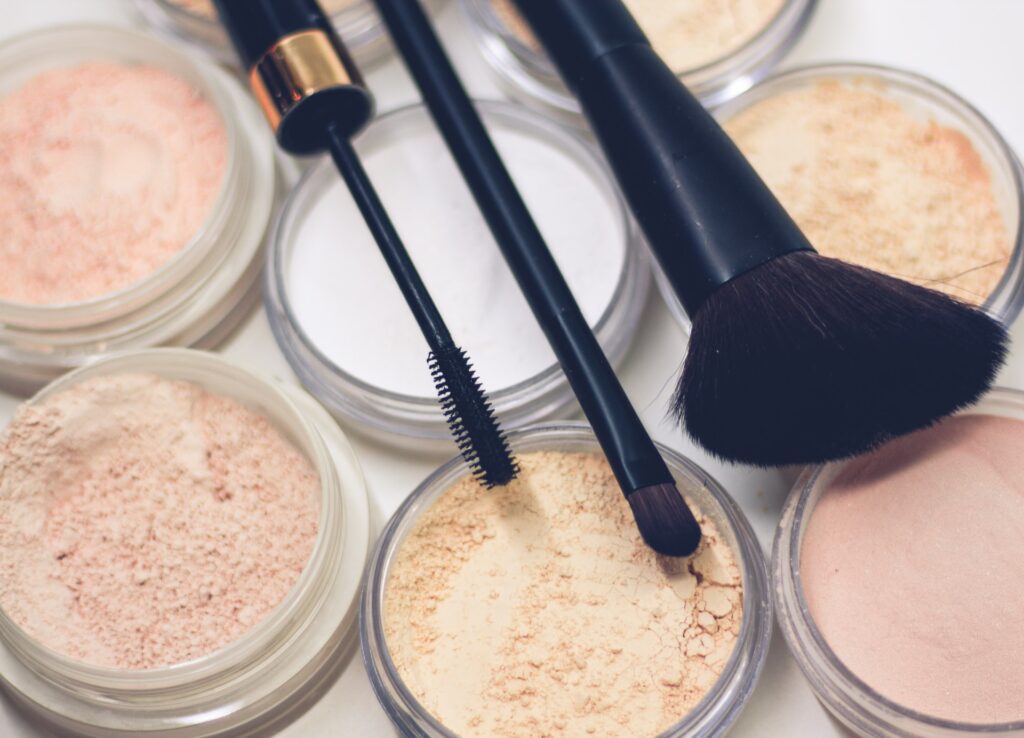
First, let’s answer the question: What are cosmetics? According to the US Food and Drug Administration (FDA), cosmetics are legally defined as, “articles intended to be rubbed, poured, sprinkled, or sprayed on, introduced into, or otherwise applied to the human body… for cleansing, beautifying, promoting attractiveness, or altering the appearance.” This is a broad spectrum that includes lipsticks, foundations, eye makeup, shampoos, moisturizers, and other beauty products.
So, can makeup cause skin cancer, or other forms of cosmetics? According to the American Cancer Society, there is little evidence to suggest that using cosmetics, or exposure to the ingredients in cosmetics with normal use, can increase your risk of developing cancer. That’s mainly because long-term human studies into the possible effects of using cosmetics don’t exist. Testing cosmetics ingredients for long-term effects, such as skin cancer, is extremely difficult and time-consuming. These studies would need to last for decades and test every combination and dosage of the ingredients possible to come to a definitive conclusion.
That being said, the laws that govern cosmetics are somewhat limited. Some ingredients that are known to be carcinogenic, such as formaldehyde and formaldehyde-released preservatives, are permitted to be used as ingredients, because there’s no evidence (or very limited evidence) to prove that they shouldn’t be at all.
Known Human Carcinogens in Makeup & Beauty Care Products
Fortunately, there are resources that consumers can look to for more information on ingredients that are or could be carcinogenic to humans. The International Agency for Research on Cancer (IARC) has categorized the chemicals it has reviewed into these classifications, based on available scientific evidence:
- Group 1: Carcinogenic to humans
- Group 2A: Probably carcinogenic to humans
- Group 2B: Possibly carcinogenic to humans
- Group 3: Not classifiable as to their carcinogenicity to humans
Currently, there are 122 agents that are classified under Group 1. Several of these agents can occasionally be found in a wide variety of makeups and beauty products, depending on the agent.
- Formaldehyde
- Phenacetin
- Coal Tar
- Benzene
- Ethylene Oxide
- Chromium
- Mineral Oils (untreated and mildly treated)
- Cadmium (as well as its compounds: arsenic, crystalline silica, or quartz)
How to Avoid Known Carcinogenic Ingredients in Cosmetics
The best way to avoid known human carcinogens in cosmetics is to read the labels before you purchase the product. Be on the lookout for formaldehyde and chemicals that release formaldehyde, such as quaternium-15, diazolidinyl urea, imidazolidinyl urea, DMDM hydantoin, and 2-bromo-2-nitropropane-1,3 diol). Look for any of the other chemicals shown in the list above.
If you spot an unfamiliar ingredient, refer to the Report on Carcinogens (RoC) from the National Toxicology Program (NTP) or the List of Classifications from the IARC. You can also ask your dermatologist for recommendations on safe products with body-safe ingredients.
Stay Informed with GentleCure
GentleCure is committed to providing you with the facts about the prevention and treatment of skin cancer. Review our blog to learn more about skin cancer, treatment options, and how to protect yourself.
